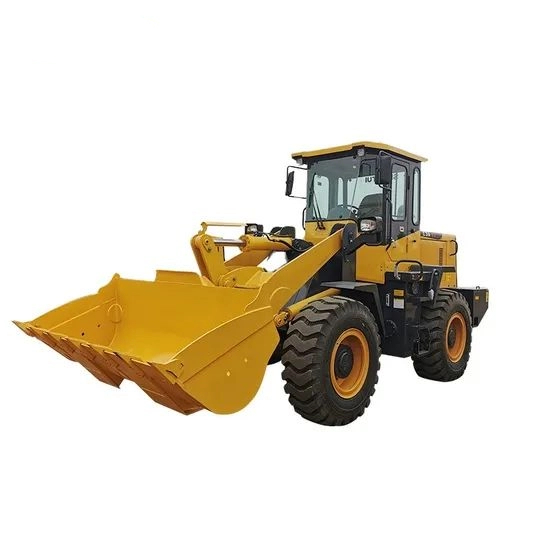When selecting a loader, it is necessary to comprehensively consider various factors such as specific work requirements, operating environment, and budget to ensure that the equipment can complete tasks efficiently and economically. The key points for selection are detailed below from multiple critical dimensions:

I. Clarify Work Requirements
The core functions of a loader are loading, unloading, and transporting materials. Differences in requirements under different scenarios will directly affect the choice of model, and the following information should be clarified first:
- Type of working materials
- Light materials (such as sand, chemical fertilizers): They have lower requirements on the power and wear resistance of the loader, and small or medium-sized loaders can meet the needs.
- Heavy materials (such as ores, steel): The loader needs to have strong power, a high-strength bucket, and a solid structure. Medium or large loaders should be selected, and attention should be paid to the wear-resistant material of the bucket (such as high manganese steel).
- Conditions of the working site
- Open sites (such as mines, ports): Large loaders can be selected as they have higher operating efficiency.
- Narrow sites (such as construction sites, warehouses): The flexibility of the loader should be considered, and priority should be given to models with a short wheelbase and a small turning radius. Small or medium-sized loaders are more suitable.
- Complex terrains (such as mountainous areas, muddy roads): Four-wheel drive loaders should be selected, and attention should be paid to the grip of the tires (such as off-road tires) and the passability of the chassis.
- Intensity and frequency of work
- High-intensity, continuous work (such as large-scale projects): Loaders with high reliability and good heat dissipation performance should be selected. Priority should be given to mature models of well-known brands to avoid affecting the progress due to equipment failures.
- Low-intensity, intermittent work (such as small farms, municipal maintenance): Small or medium-sized loaders can meet the needs, and the requirements for brands and configurations can be appropriately reduced to control costs.
II. Pay Attention to Core Performance Parameters
- Rated load capacity: This is the most critical parameter of the loader and should be selected according to the weight of the materials and the amount of work per operation. For example, when loading and unloading ores, a loader with a rated load capacity of more than 5 tons should be selected; while for transporting light materials such as sand, a model with about 3 tons may be more economical.
- Engine power: The greater the power, the stronger the power of the loader and the higher the operating efficiency, but the fuel consumption will also increase accordingly. It is necessary to balance power and fuel consumption according to work requirements to avoid "a big horse pulling a small cart" or "a small horse pulling a big cart".
- Bucket capacity: It matches the rated load capacity. The larger the capacity, the more work can be done in a single operation, but it will also increase the load of the equipment. When selecting, it is necessary to consider the density of the materials (for example, ores have high density, so the bucket capacity should not be too large).
- Driving speed: Including forward and backward speeds. The faster the speed, the higher the efficiency of transferring between sites, but stability must be ensured during operation. For scenarios with open sites and frequent transfers, models with higher driving speeds can be selected.
III. Choose the Appropriate Driving Mode
- Two-wheel drive loaders: They have a simple structure, low cost, and low fuel consumption. They are suitable for working on flat hard roads (such as cement roads, asphalt roads), such as material handling in warehouses.
- Four-wheel drive loaders: They have strong power and good grip, are suitable for complex terrains and muddy roads, and have a wider range of applications. They are the first choice for most working scenarios, especially field operations and complex sites.





